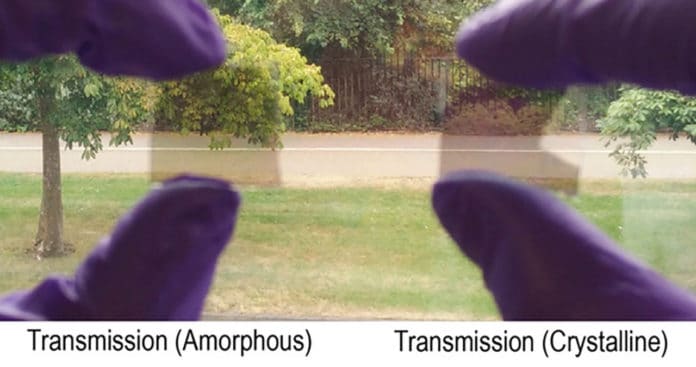Homeowners know that the type of windows in a house contributes greatly to heating and cooling efficiency. Maintaining indoor temperatures consumes huge amounts of energy and accounts for 20 to 40% of the national energy budgets in developed countries.
Now, researchers from the University of Pittsburgh, Pennsylvania, and the University of Oxford have proposed a new “smart window” design that would harvest the sun’s energy in the winter to warm the house and reflect it in the summer to keep it cool.
“The major innovation is that these windows can change according to seasonal needs,” explained Nathan Youngblood, assistant professor of electrical and computer engineering at Pitt and first author. “They absorb near-infrared light from the sun in the winter and turn it into heat for the inside of a building. In the summer months, the sun can be reflected instead of absorbed.”
The prototype film is said to be made up of an optical stack of materials less than 300 nanometers thick, with a very thin active layer made of “phase change” materials that can absorb the invisible wavelengths of the sun’s light and emit it as heat. That same material can be “switched” so that it turns those wavelengths of light away instead. The material could be adjusted for more precise temperature control, such that 30% of the material turns away heat while 70% is absorbing and emitting it.
Researchers exploit tuning how invisible wavelengths are transmitted or reflected to modulate temperature. They estimate that using these smart windows – including the energy required to control the film – would save 20 to 34% in energy usage annually compared to double-paned windows typically found in homes.
To create and test their prototypes, the researchers worked with Bodle Technologies, a company specializing in ultra-thin reflective films that can function as displays by controlling color and light, and Eckersley O’Callaghan, a leading engineering and architectural firm, and Plasma App, a thin films company.
“This work demonstrates yet another interesting optoelectronic application of Phase Change Materials with the potential to significantly improve our everyday life,” said Peiman Hosseini, CEO of Bodle Technologies. “The commercialization of PCM-based tuneable low-e glass panels still has a number of significant challenges left to overcome; however, these preliminary results prove that the long developmental road ahead is certainly warranted. I believe this technology should be part of any future holistic policy approach tackling climate change.”
